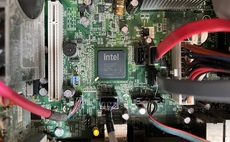Upcoming technical challenges will need collaboration, says AMD spin-off
Global Foundries has been outlining the challenges in future silicon design Global Foundries has been detailing how it will overcome the technical challenges of mass producing silicon hardware at...
To continue reading this article...
Join Computing
- Unlimited access to real-time news, analysis and opinion from the technology industry
- Receive important and breaking news in our daily newsletter
- Be the first to hear about our events and awards programmes
- Join live member only interviews with IT leaders at the ‘IT Lounge’; your chance to ask your burning tech questions and have them answered
- Access to the Computing Delta hub providing market intelligence and research
- Receive our members-only newsletter with exclusive opinion pieces from senior IT Leaders





















